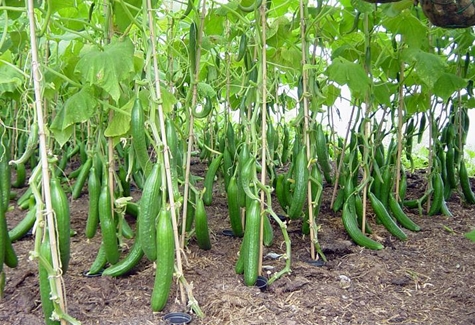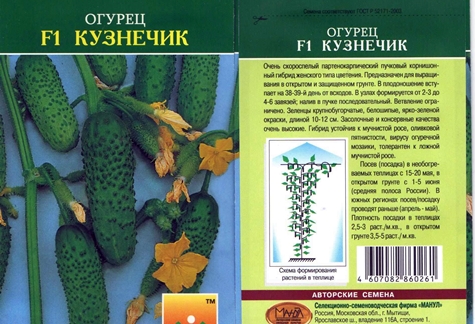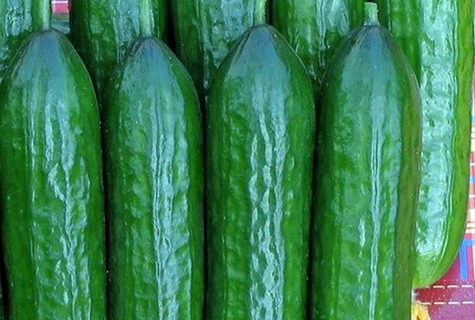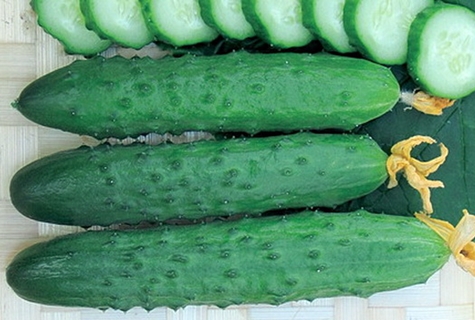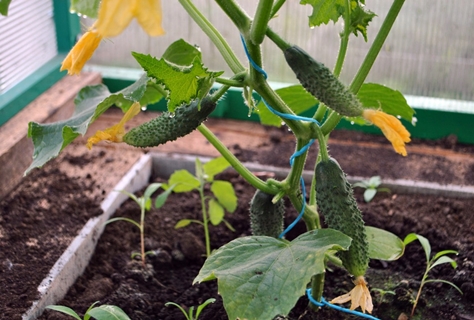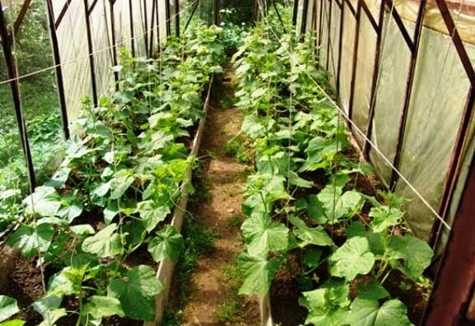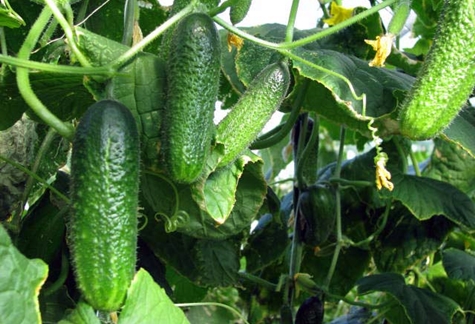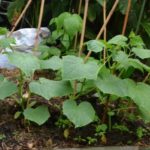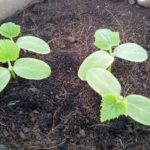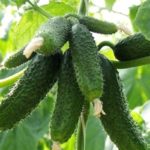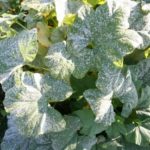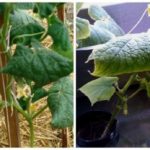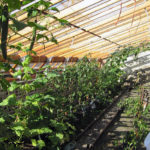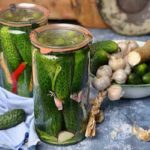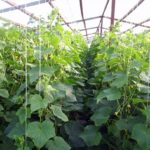You can choose many varieties of cucumbers for the Krasnodar region. The warm, mild climate is suitable for most vegetable crops. The land in this area is considered fertile and there is no need to think about what fertilizers need to be applied. The only drawback is dry air and rare rains.
Important information
The Krasnodar region is distinguished by fertile soils, but the negative side is its insufficient moisture. If you don’t have to apply a lot of fertilizers, you will always need to monitor timely watering. A hot climate has a bad effect on the root system, so when choosing varieties, you should take into account their resistance to drought and pests.
If the soil is not moistened in time, its temperature can reach 35-40 degrees. In this case, diseases begin to develop, the leaves wither, dry out, and the ovaries fall off.
The problem with drought can be solved not only by watering. Mulching will make caring for tomatoes easier. Covering the soil with an additional layer will not only help retain moisture in the soil, but also reduce the risk of infection spreading, and there will also be no need to control weeds. As mulch, you can choose sawdust or light-colored sand, light plastic film.
You can retain moisture in the soil by spreading mown or torn grass between the rows. Nettle is best. In addition to retaining moisture, it can enrich it with microelements, and the smell repels many pests.
To successfully grow cucumbers in a greenhouse in the Krasnodar region, you must follow some rules. This information is especially important for beginners.
- The best soil in a greenhouse is considered to be a mixture of turf and humus. High yields can be obtained by mixing soil with softwood sawdust.
- In the spring, the soil is dug up and disinfected; copper sulfate can be used for this purpose.
- It is useful to apply fertilizers. A mixture of potassium sulfate, superphosphate and ammonium nitrate is suitable.
- Cucumber seeds in the southern regions in greenhouse conditions can be planted in late February or early March. You can plant in an unprotected garden plot as early as the beginning of May, by which time the ground has time to warm up.
- The distance between varieties that require bee pollination should be approximately 45 cm, and between rows about 50 cm.
- It is recommended to install a support to which the stem will need to be tied after 5 days.
- Fertilizer must be applied before and after fruiting. No fertilizing is applied during fruit growth.
It is best to choose hybrids. Breeders obtain them by crossing certain varieties of cucumbers to obtain better characteristics. Hybrids are characterized by high resistance to arid climates and resist diseases and pest attacks.
Lots of greenery
When growing cucumbers in the Krasnodar region, it is best to choose varieties with heavily leafy branching. Greens can protect the soil from overheating and fully saturate the plant with moisture. It is imperative to remove old leaves from the plant to allow new ones to appear.
Ant F1 is a very early variety; the first harvest can be harvested after a little more than a month. Length approximately 11.5 cm, weight about 100 g. The tubercles are large, covered with white fluff. Suitable for greenhouses, but also grows well in open ground. The taste is juicy, without any bitter aftertaste. Fruits even in the absence of sufficient moisture.
Grasshopper is a variety with early fruit ripening. After 40 days you can taste the cucumbers. No bee pollination required. The fruits themselves have large tubercles and slight ribbing. They grow up to 14 cm in length and can weigh 110 g.
Okhotny Ryad gherkins can be tasted 38 days after planting the seeds. The fruits are not very long, only 9 cm. The tubercles are small and there are not very many of them. Shows resistance to many diseases, tolerates drought, bears fruit for a long time.
The first class refers to self-pollinating varieties. After full germination, the first fruits can be harvested after 39 days.Small cucumbers weighing approximately 85 g have an oval shape, small tubercles and sparse fluff. In the southern regions it can be grown without shelter.
Cucumbers of these varieties require minimal care. During the entire growing season, it is enough to apply fertilizer three times, periodically weed and loosen the soil.
Against heat and drought
The Kuban climate is characterized by a predominance of sunny, dry days. Drought has an adverse effect on vegetable crops, so we have to adapt. In Kuban, you can plant varieties that are highly resistant to heat and drought. The following varieties of cucumbers are among the most popular among gardeners.
The high-yielding plant of the Tamerlan F1 variety begins to bear fruit after 41 days. Resistant to many diseases, the variety is not susceptible to rotting. The length of the fruit reaches 15 cm. The surface is smooth, the inside is crispy, without bitterness.
Bukhara F1 is an early ripening, self-pollinating variety. The first sample can be taken after 42 days. Shows resistance to many viruses. The plant tolerates heat well. The fruits ripen simultaneously and have a thin, smooth skin and a sweet, crisp interior. Weight approximately 120 g, length approximately 14 cm.
Kochubey F1 produces smooth, dark green cucumbers, up to 15 cm long. It has average fruit ripening limits. The first harvest is harvested after 50 days. Smooth cucumbers are about 11 cm long and can weigh 115 g.
Farmer F1 is characterized by medium-early fruit ripening (45 days). The tubercles on the fruit are small, sparse, and have slight ribbing. The length of cucumbers is approximately 10 cm, weight approximately 100 g. It tolerates temperature changes well and is resistant to many diseases.
The Melnitsa F1 variety pleases gardeners with its numerous, high-quality harvests, which ripen early. The tubercles are large with white edges. The length can reach 18 cm. The flesh is dense and crispy, there is not a hint of bitterness.
Hybrid Marta F1 is a bee-pollinated variety with excellent, numerous yields. Thin, long cucumbers can reach 35 cm in length. The surface of the fruit is lumpy and tastes sweet and crunchy.
Fast and Furious F1 is early ripening variety of cucumbers, which can be planted in open ground and greenhouses. The first harvest can be collected in 38 days. The surface has large tubercles, with spines at the end of the tubercles. The length of the fruit is approximately 12 cm, weight is 120 g.
High yield
The best varieties of cucumbers for the Rostov region, which are characterized by high yields.
The gherkin cucumber variety Gerda F1 belongs to the mid-early group. You can harvest in 1.5 months. Cucumbers are short with large tubercles, the dark green surface has light green stripes. The length of the fruit is approximately 9 cm, weight is approximately 75 g.
Kai F1 will delight you with a high yield of small cucumbers. Fruit ripening dates are medium-early (48 days). The length of the cucumbers is approximately 7 cm, the weight is 70 g. There are many large tubercles on the surface. The flesh is dense and crispy.
You can grow Madame F1 gherkins. Juicy, tasty fruits can be harvested in just 43 days; they ripen at the same time. Flowers are pollinated by bees, so this condition must be taken into account when growing in greenhouses. Short cucumbers have small tubercles and light stripes on the surface.
The advantage is not only its small size, but also the ability not to turn yellow for a long time. There is no bitterness in the taste.
The Alligator F1 variety bears fruit for a long time, is characterized by high productivity and resistance to rot and disease. The surface has sparse tubercles and short stripes. The fruits are long, can reach 40 cm, and weigh about 300 g. The taste is juicy with a pleasant sweetish aftertaste.
In the Rostov region, cucumbers grown from seeds of the Success 221 variety showed good results. They are often planted in the southern regions in open beds, as the plant tolerates drought and hot climates. Pollinated by bees. Large fruits ripen 48 days after planting.
Hybrid Sputnik F1 is a mid-season variety. The fruits begin to ripen after 43 days. Cylindrical-shaped cucumbers weigh on average 70 g, the ribbing is average, and the tubercles are small. The pulp is very juicy and sweet.
All these seeds of the best varieties of cucumbers for the Rostov region tolerate temperature changes well, can develop for a long time without soil moisture and are resistant to the main pathogens.
Answer from experienced gardeners
“I’ve been living in Kuban for a long time. And I want to share my experience of growing cucumbers.
In the fall, when the crops are harvested from the beds, I dig shallow trenches at a distance of about 20 cm. I pour humus or fallen leaves into the resulting depressions, sometimes using wood ash. I fill the trench with earth.
Planting of cucumbers of proven and favorite varieties begins in the spring, in early May. As soon as the sprouts sprout, I thin them out. I leave the seedlings at a distance of 25 cm. I install a support near each plant, to which I then tie the stem.
The most favorite varieties are Zhuravlenok, Solnechny, Palchik, Semcross. I water, spray and fertilize as needed. Cucumbers grow big, are tasty, do not turn yellow and are not bitter.”
The baby cranes begin to mature after 43 days. The fruits widen slightly towards the tip and are covered with sparse tubercles with black dots. They grow about 11 cm in length and weigh about 100 g. The variety actively resists diseases. Numerous fruits taste crisp and not bitter.
The fruits of the Solnechny variety are cylindrical in shape, with large tubercles with white spines. The color of the fruit is light green. They can reach 12 cm in length and weigh approximately 110 g. The first harvest can be harvested in 45 days.
Semcross F1 is an early ripening cucumber variety that is pollinated by bees. The fruits ripen early and are disease resistant. They are small in length, only 8-9 cm, weigh approximately 85 g. There are large tubercles on the surface. There is no bitterness in the taste.

